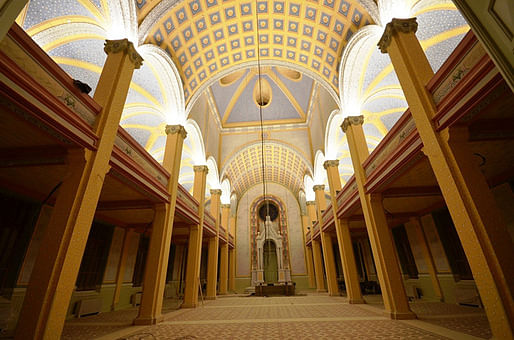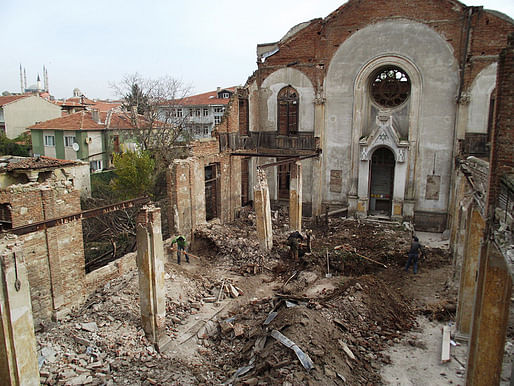
Top Turkish government officials, nearly 100 international dignitaries, and 500 members of the Turkish Jewish community took part in a ceremony commemorating the re-opening of the Great Synagogue of Edirne today after a five-year restoration. The synagogue is claimed to be the largest synagogue in the Balkans and the third largest in Europe.
The $2.5 million government investment repaired the synagogue's lead-clad domes, its collapsed roof and walls, and its foundation was fortified. Inside, the floor covering was restored to its original patterns and colors, as well as the Torah inscriptions. Turkey’s Prime Ministry General Directorate of Foundations oversaw the restoration.


The Great Synagogue of Edirne - after and before restoration.
The push to rebuild the Great Synagogue began in 2010, as part of an effort to mitigate restrictions on Turkey's non-Muslim religious minorities. Authorities describe the Great Synagogue's reopening as a symbol of tolerance towards Turkey's Jewish community. However, reports say there has been a recent increase in anti-Semitic attitudes as well as Jews leaving the country.



The Great Synagogue has long stood as a significant center of faith, housing the places of worship of three sacred religions. After The Great Fire in 1903 that destroyed the former community synagogues, the Sephardic Jewish community in Edirne was left without a space of worship. Following the permission of the Ottoman Government and the edict of Abdul Hamid II, construction of the "Kal Kadoş Agadol" -- or the Great Synagogue -- began on January 6, 1906 and first opened for service on the day before Passover in April 1909. The synagogue held services until it became vacant in 1983, when the Jewish population in Edirne plummeted.

French architect France Depré modeled the synagogue after the Ottoman Sephardic Synagogue in Vienna, which was later destroyed by Nazis. The synagogue consisted of three buildings and 2,746 sq. m. of usage space that could accommodate up to 1,200 worshipers.
Other recent restoration and historic preservation efforts in Turkey include the Ani Archaeological Site, Seljuk artifacts, the Church of the Holy Cross on Akdamar Island, and Byzantine-era structures.
No Comments
Block this user
Are you sure you want to block this user and hide all related comments throughout the site?
Archinect
This is your first comment on Archinect. Your comment will be visible once approved.